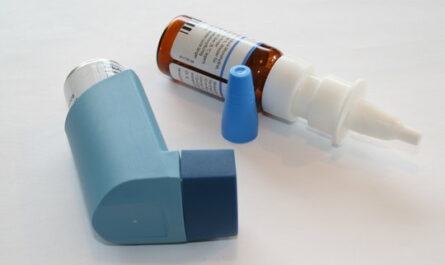
Introduction to Medical Imaging Reagents
Medical imaging reagents play a crucial role in modern medical diagnostic techniques by enhancing the visibility of internal organs, tissues or physiological functions. These reagents work by interacting with the body in specific ways to generate contrast during imaging procedures like computed tomography (CT), magnetic resonance imaging (MRI), ultrasound, positron emission tomography (PET), and single-photon emission computed tomography (SPECT). By improving the detectability and delineation of abnormalities, they enable clinicians to arrive at more accurate diagnoses. In this article, we will discuss various types of medical imaging reagents, their applications and medical imaging reagents outlook.
Contrast Agents for X-Ray and CT Imaging
One of the most commonly used types of medical imaging reagents are contrast agents administered during X-ray and CT exams. These contrast materials contain iodine, which has a high atomic number and absorbs X-rays efficiently. When injected intravenously, iodinated contrast agents circulate systemically and are taken up by organs like the liver, kidneys, and tumors at different rates. This differential uptake creates contrast between normal and pathological tissues on CT images, making abnormalities more conspicuous. Iodinated contrast allows clinicians to thoroughly evaluate conditions affecting organs like the liver, detect cancer metastases earlier, and guide procedures like biopsies with greater precision. Newer CT contrast agents containing nanoparticles of gold or iron oxide are also being researched for their added benefits.
MRI Contrast Agents
MR imaging uses powerful magnetic fields and radio waves instead of ionizing radiation like X-rays. However, normal soft tissues may appear similar in signal intensity on conventional MR images, limiting its diagnostic capability. To improve tissue contrast in MRI, gadolinium-based contrast agents are frequently administered. As gadolinium has an unpaired electron, it shortens the relaxation time of nearby protons when circulation goes through an enhanced region, making it appear brighter on T1-weighted MR images. This increased conspicuity enables more accurate diagnosis and staging of diseases like cancers, infections, inflammation and multiple sclerosis. Advanced macromolecular MRI contrast agents are also under development to provide even greater anatomical and physiological details.
Molecular Imaging with Radiotracers
While structural imaging techniques provide anatomical information, molecular imaging techniques allow visualization of biological processes going on inside the body at a microscopic level. PET and SPECT involve injection of radiotracers – molecular imaging agents labeled with positron- or gamma-emitting radioactive isotopes respectively. These tracers accumulate in tissues based on their metabolic activity or expression of targeted receptors and antigens. Detection of the radiations emitted upon radioactive decay of the isotopes allows construction of three-dimensional images depicting the spatial distribution of the molecular process of interest. This functional imaging approach ushered in by radiotracers has revolutionized disease diagnosis, staging and monitoring of treatment response in oncology, cardiology and neurology.
Ultrasound Contrast Agents
In ultrasound imaging, microbubbles introduced as contrast agents significantly elevate the echoes returned from blood. Consisting of an inner gas core stabilized by an outer shell, these microbubbles oscillate and scatter ultrasound waves more efficiently than surrounding tissue when insonated. When injected intravenously, they follow intravascular flow, allowing enhanced visualization and quantification of blood flow in organs like the heart and tumors. Ultrasound contrast agents have found utility in improving detection of cardiovascular abnormalities and cancers, studying tumor angiogenesis, and guiding minimally invasive procedures. They help get more information from relatively inexpensive ultrasound exams compared to other high-end techniques.
Advancing Medical Imaging through Novel Reagents
Constant innovation is taking place in the development of next-generation medical imaging reagents. Nanoparticle-based contrast agents are being engineered for multi-modal imaging capabilities, active targeting of biomarkers, and theranostic applications. Cell labeling with superparamagnetic nanoparticles enables non-invasive tracking of stem cells post-transplant. Novel probes targeting cancer cell metabolism and hypoxia are expanding the horizons of molecular imaging. Theranostic radiotracers capable of both imaging and targeted radiotherapy are an area of intense research. Combination therapy approaches fusing imaging reagents with photosensitizers or immunotherapeutic payloads also hold promise. Overall, advances in medical imaging reagents will continue revolutionizing disease diagnosis, monitoring, and management – helping realize the full potential of molecular medicine.
*Note:
- Source: Coherent Market Insights, Public sources, Desk research
- We have leveraged AI tools to mine information and compile it



